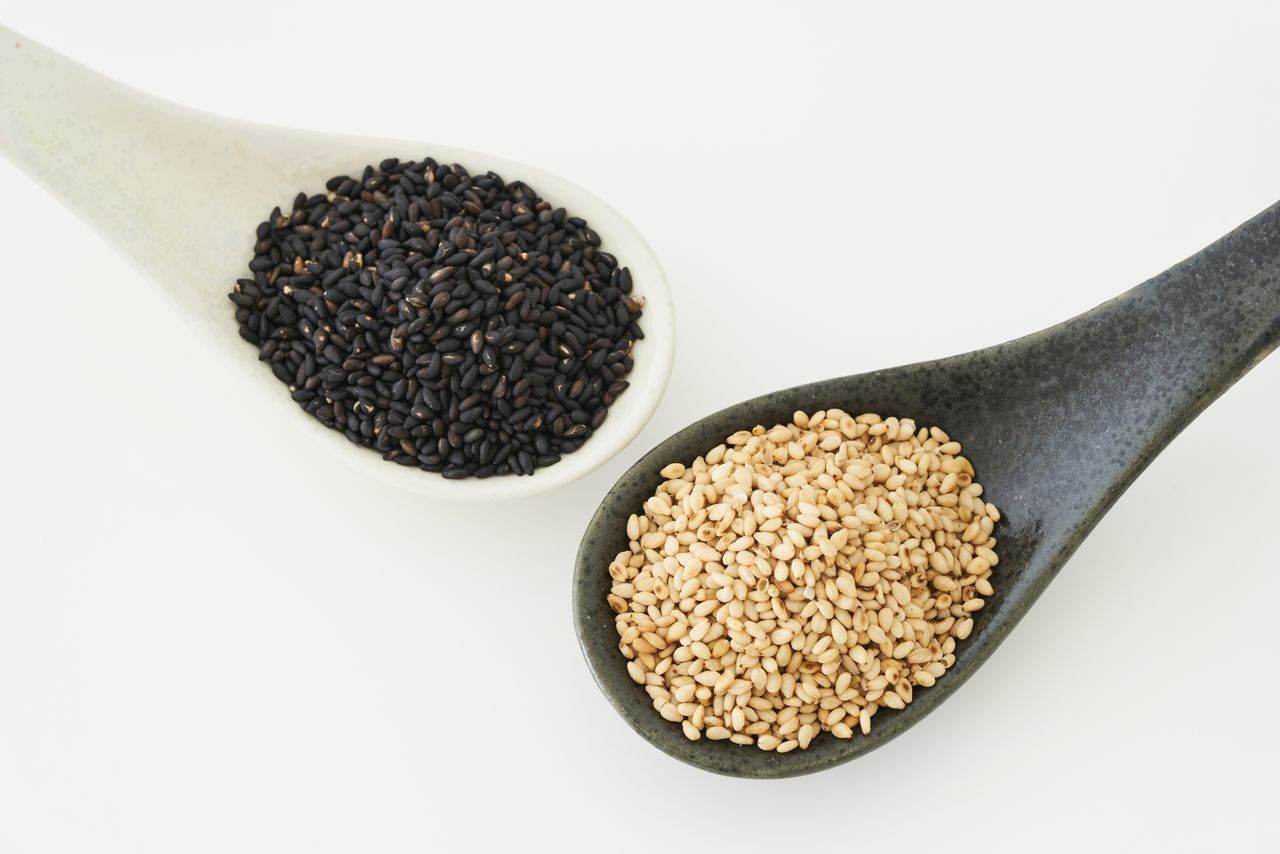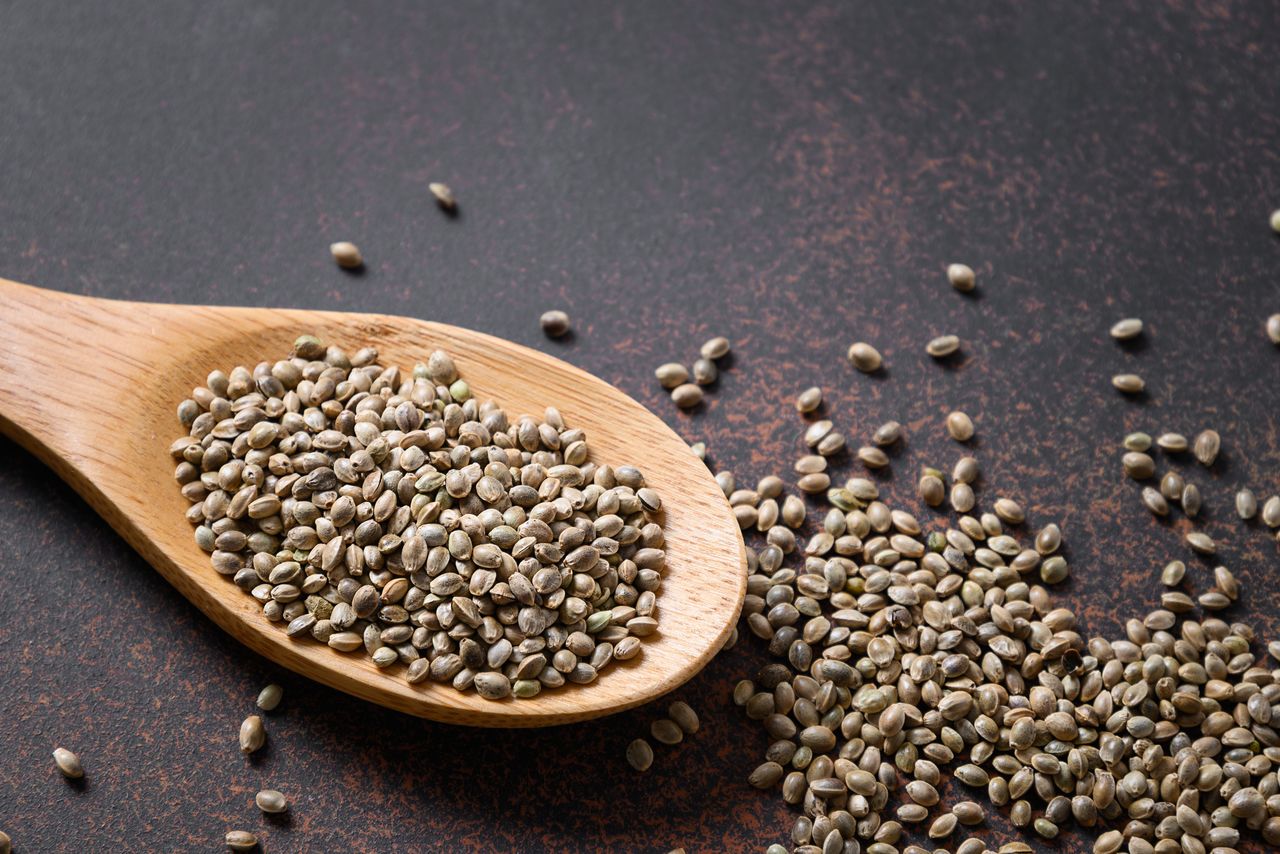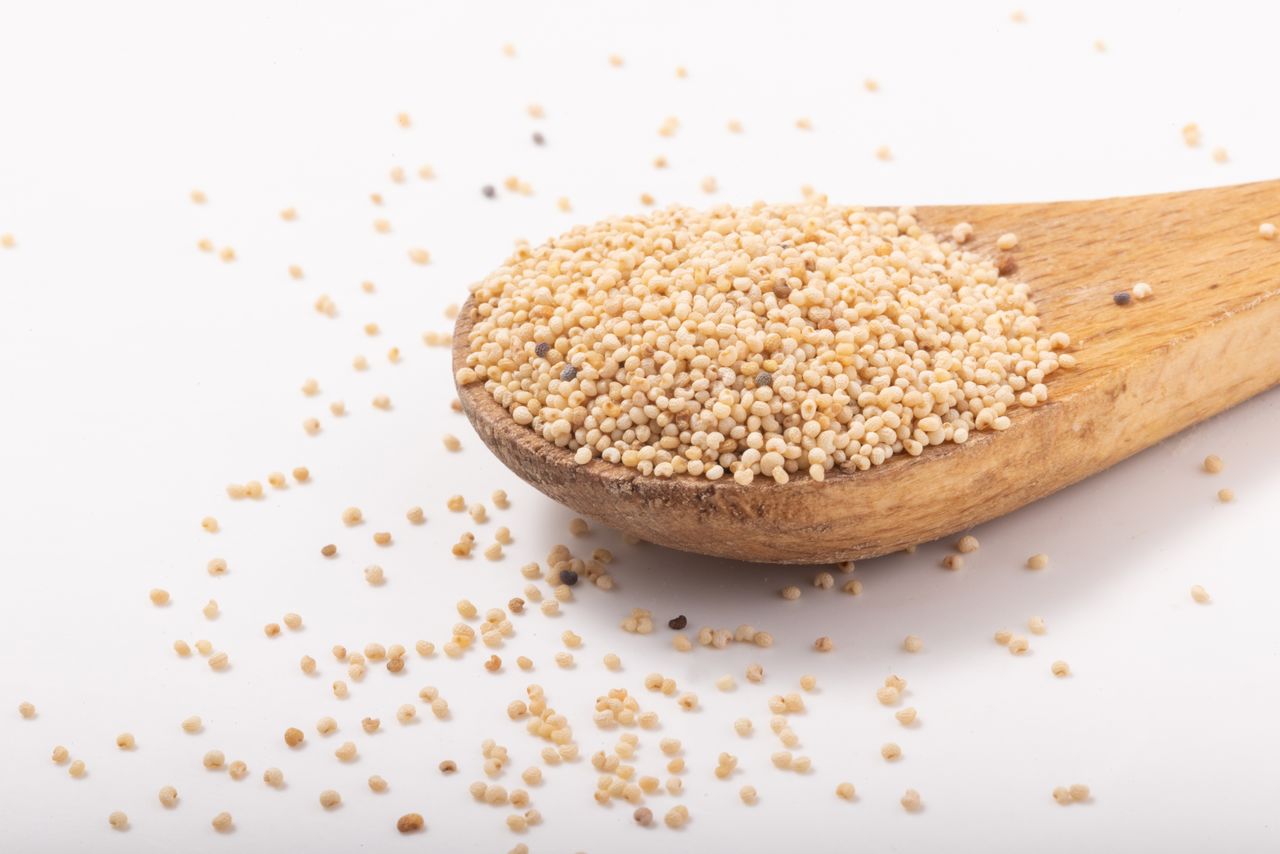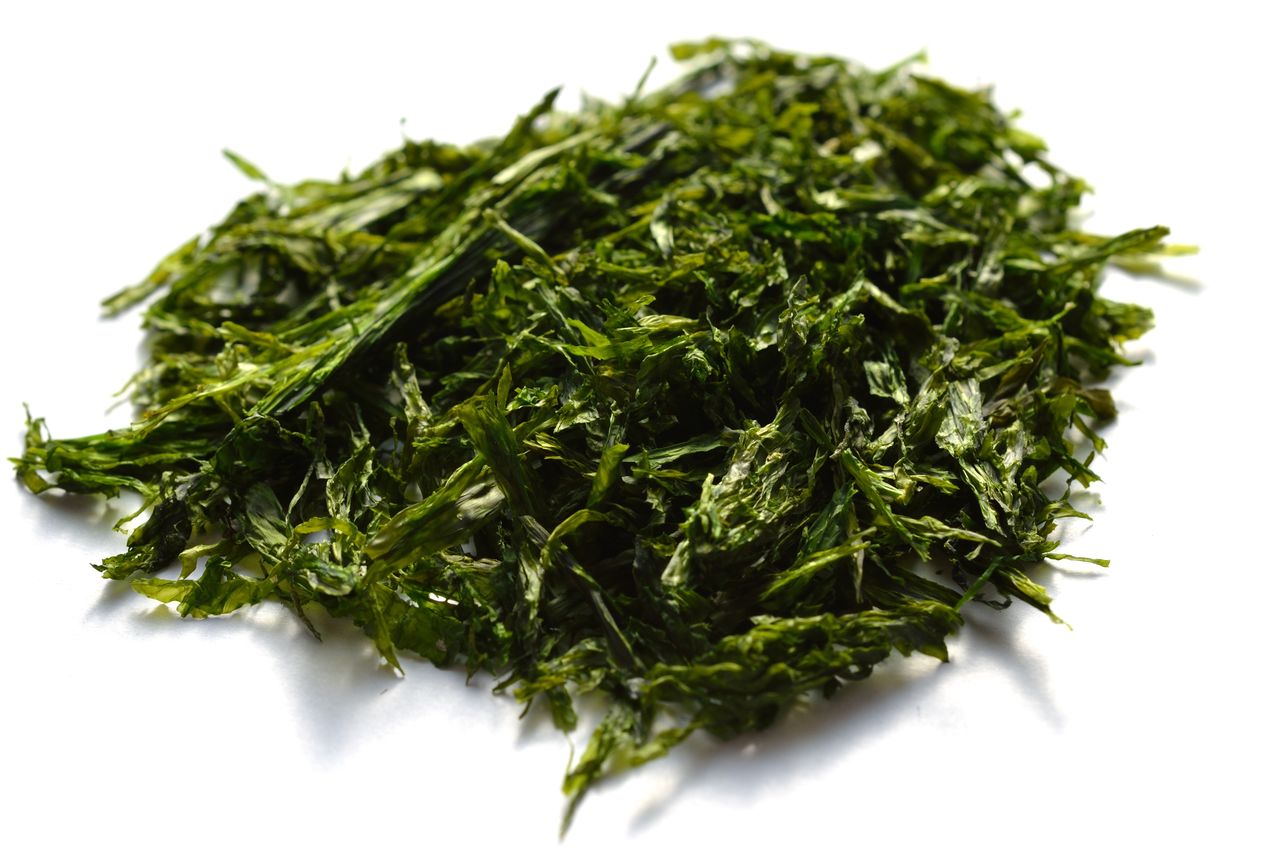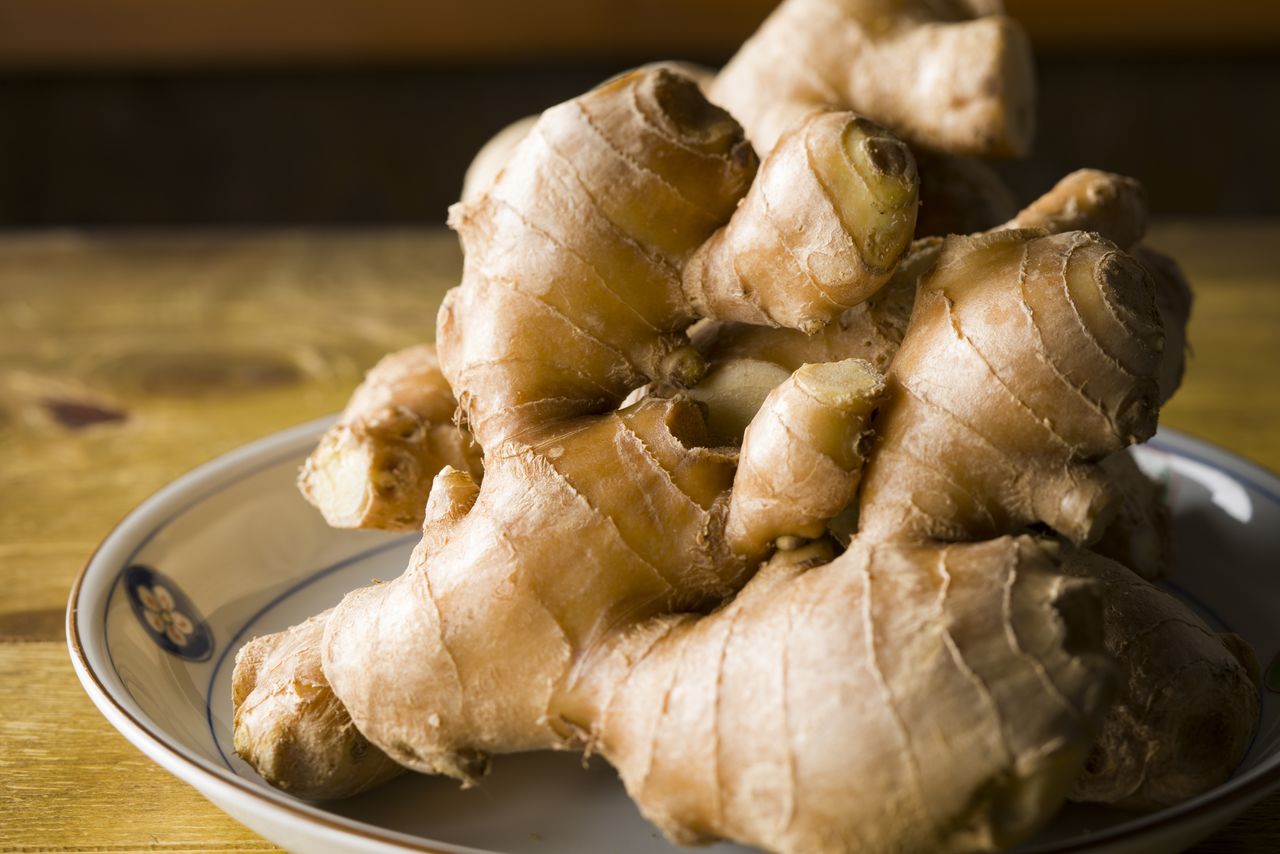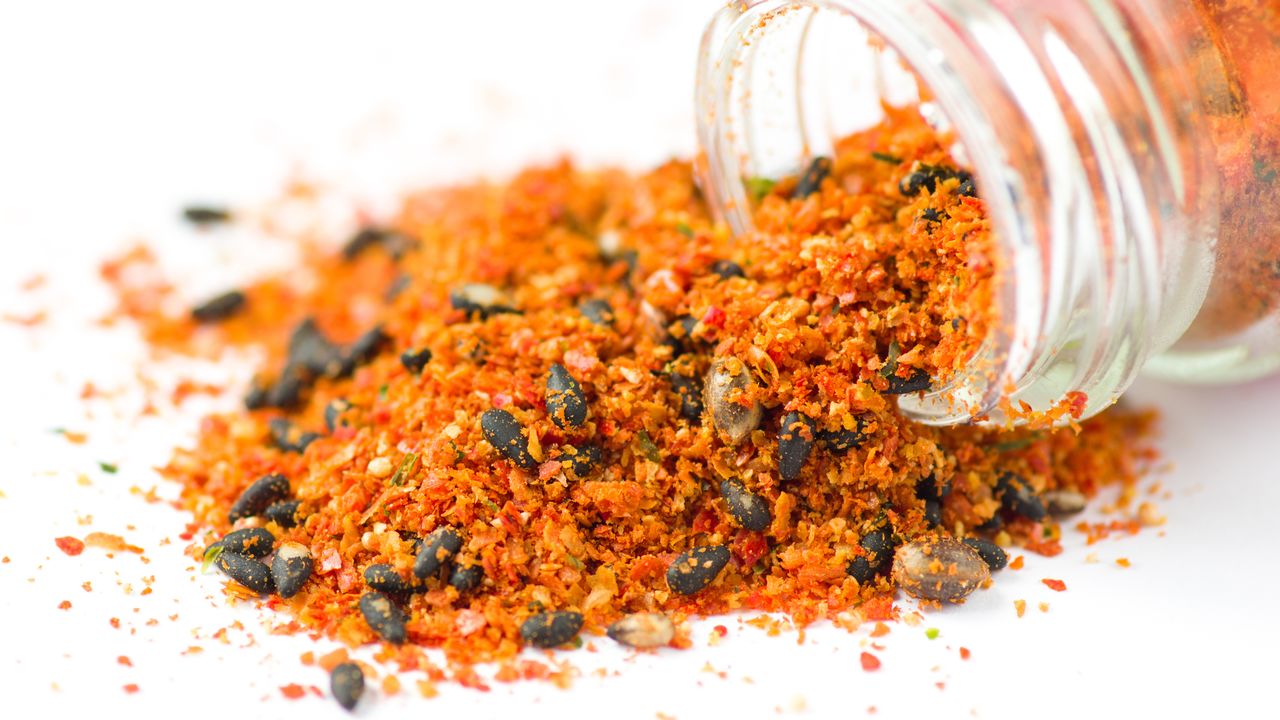
“Shichimi”: The Japanese Seven-Spice Blend with a Long History
Food and Drink Health History- English
- 日本語
- 简体字
- 繁體字
- Français
- Español
- العربية
- Русский
Shichimi tōgarashi (literally “seven-flavor chili pepper”) is said to have originated in 1625, when the spice merchant Karashiya Tokuemon established a shop on the banks of the Yagenbori canal in the Ryōgoku district of Edo (now Tokyo) and, inspired by traditional Chinese medicine, combined chili peppers with various other ingredients. It is a distinct Japanese spice blend.
The name Yagenbori comes from the fact the bottom of the canal was V-shaped, similar to a tool called a yagen, used for grinding herbal medicines into powder. The surrounding area, which became known by that name, was a place where doctors and medicine wholesalers congregated.
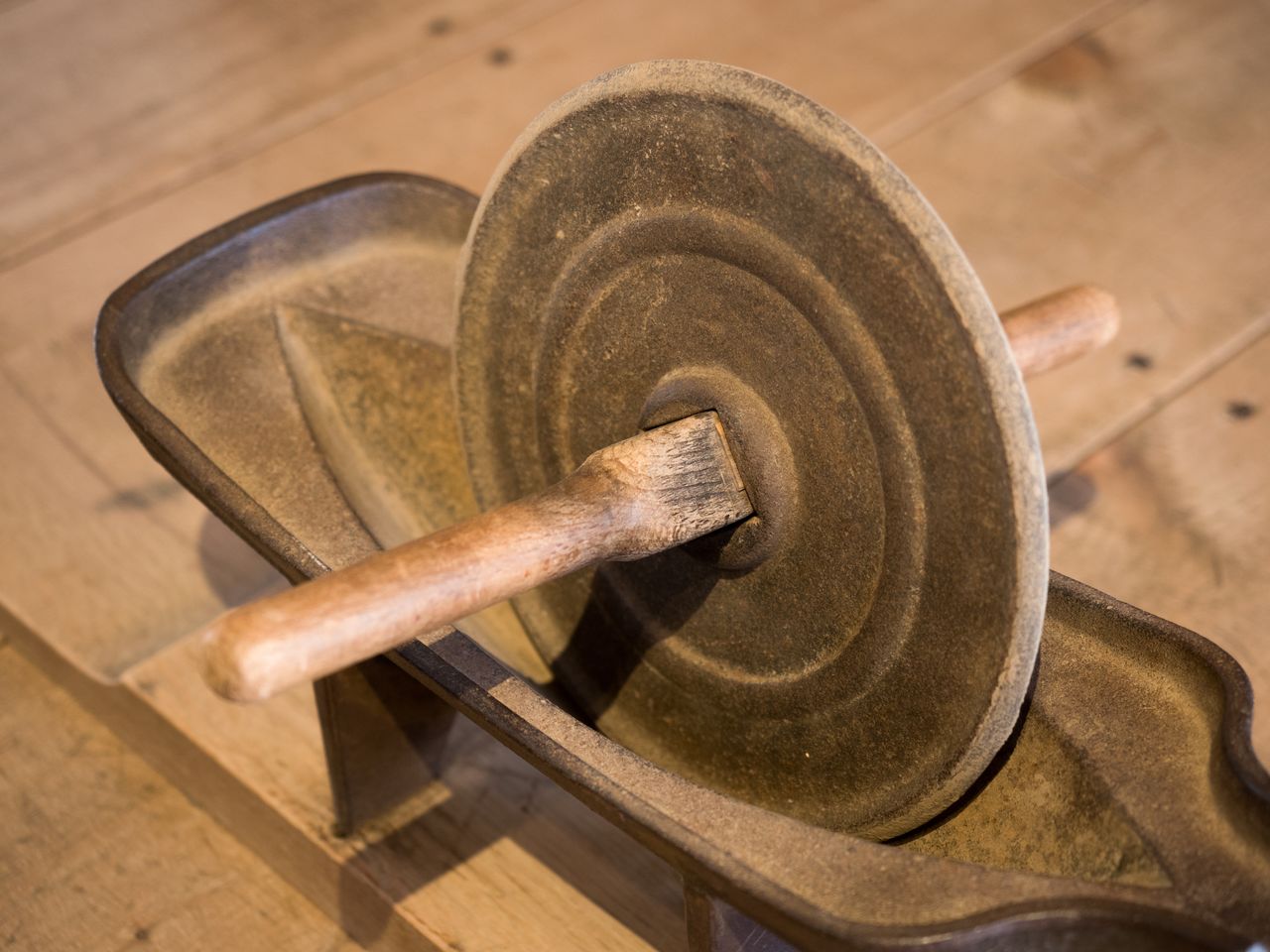
A yagen spice grinding tool. (© Pixta)
Originally, the shichimi blend was sold for its medicinal properties at the gates of temples and shrines and from there grew in popularity. Eventually, with the spread of Edo food culture, it began to be sold throughout Japan. The three major shichimi brands are said to be Yagenbori , the Edo originator of the blend, Yawataya Isogorō in Shinshū, now Nagano Prefecture, and Shichimiya Honpo in Kyoto.
Each brand has its own combination of ingredients, which may put the stress on spiciness or aroma. The standard spices found in all three recipes though are chili pepper, sanshō (Japanese pepper), and sesame seeds. Some shops specialize in blending shichimi on the spot to accommodate customer preferences, while others offer original recipes that use herbs like basil and cumin, or extra spicy chili peppers.
Composition of Shichimi from the Three Major Brands
| Yagenbori | Yawataya | Shichimiya | |
|---|---|---|---|
| Chili pepper | ✔ | ✔ | ✔ |
| Sanshō (Japanese pepper) | ✔ | ✔ | ✔ |
| Grilled chili pepper | ✔ | ||
| Black sesame seeds | ✔ | ✔ | ✔ |
| White sesame seeds | ✔ | ||
| Chinpi (dried citrus peel) | ✔ | ✔ | |
| Poppy seeds | ✔ | ||
| Hemp seeds | ✔ | ✔ | ✔ |
| Aonori (seaweed) | ✔ | ||
| Shiso | ✔ | ✔ | |
| Ginger | ✔ |
Chili Pepper
Native to Central and South America, chili peppers are said to have been brought back to Spain by Columbus during the Age of Discovery, from where their use spread all over the world. One of the theories of how they arrived in Japan is that they were brought by Portuguese missionaries, while another is that Toyotomi Hideyoshi’s armies returned with seeds after his attempted invasion of Korea. Capsaicin, the compound that makes the peppers spicy, increases appetite, improves blood circulation, and burns fat through inducing sweating.
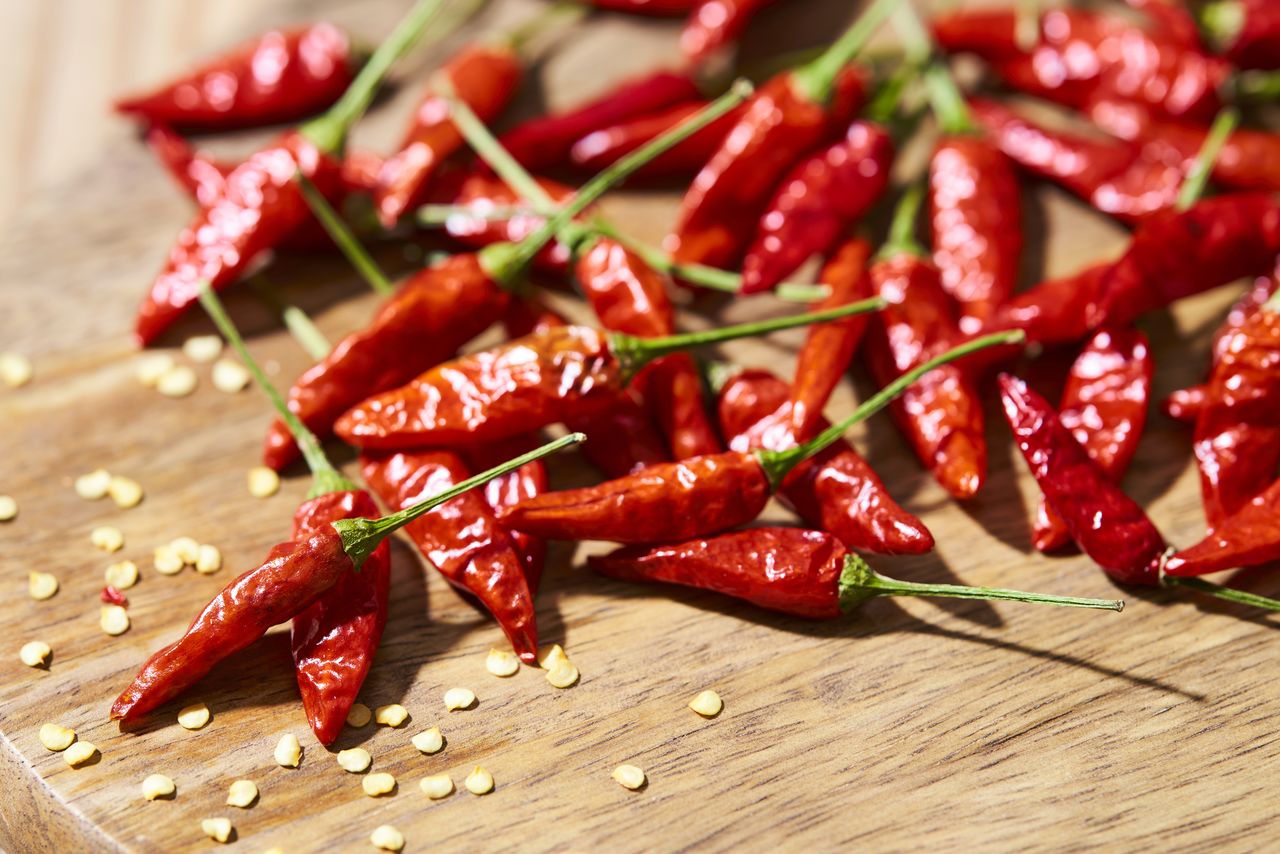
Taka no tsume red hot pepper. (© Pixta)
Sanshō (Japanese Pepper)
This spice, from a deciduous tree belonging to the citrus family, is also known as shibikara, as it has a “numbing spiciness.” It has long been used for pain relief and as a stomach medicine. Powdered sanshō is well-known as an accompaniment to eel, but it is also an essential ingredient of shichimi tōgarashi.
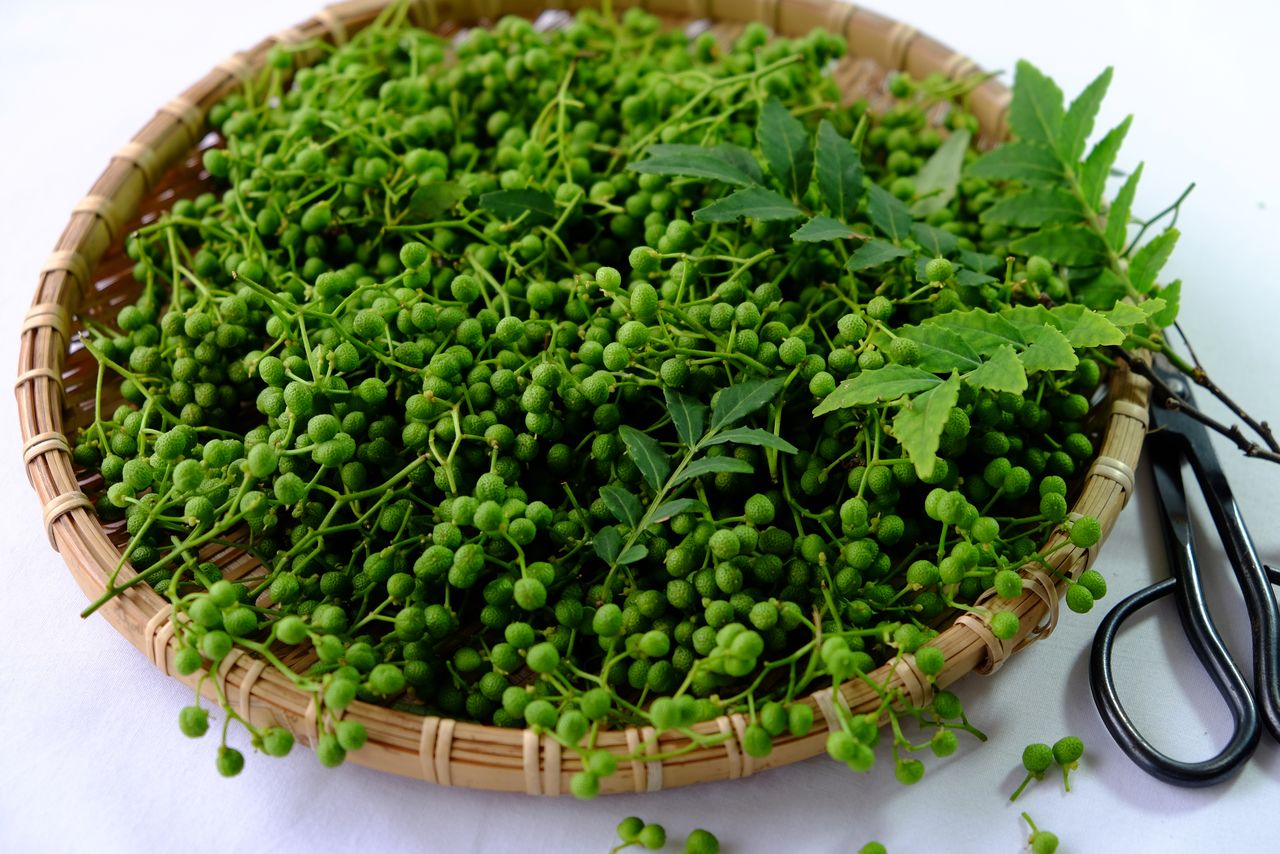
Sanshō Japanese pepper. (© Pixta)
Sesame Seeds
These seeds have long been loved as a healthy ingredient as they contain a good balance of nutrients, including unsaturated fatty acids, vitamins, protein, calcium, and iron. This is an aromatic ingredient of shichimi and also acts as a way to reduce the spiciness.
Hemp Seeds
This is a type of grain that has commonly been eaten in Japan and around the world since ancient times. It is the largest seed used in shichimi and when bitten, it gives a special crunchy texture and fragrancy. Rich in protein and minerals, it has gained attention in recent years as a superfood.
Poppy Seeds
These little seeds are commonly seen in Japan atop anpan sweet bean-paste buns. When roasted, they are aromatic and crunchy. Although small, they contain a great balance of minerals, vitamins, and dietary fiber.
Chinpi (Dried Citrus Peel)
This is the dried peel of mikan mandarin orange. It has long been used as a herbal medicine to treat coughs and phlegm, as well as to regulate the functioning of the stomach. It also adds a distinctive fresh citrus aroma to other ingredients.
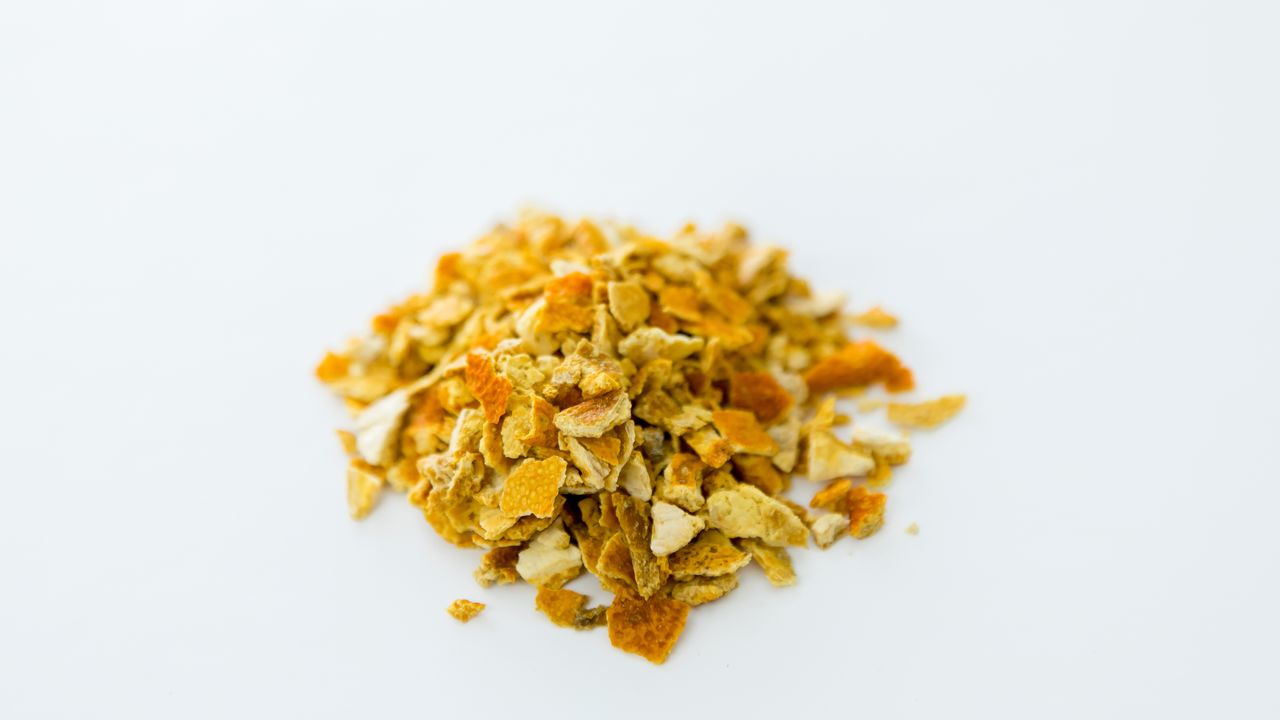
Chinpi dried citrus peel. (© Pixta)
Aonori (Seaweed)
These are vibrant green lavers, including suji-aonori river seaweed and usuba-aonori (Ulva linza). While the green powder sprinkled on takoyaki and okonomiyaki is sold as aonori, that is actually a different type of seaweed called aosa-nori. Genuine aonori has a stronger aroma and is more expensive.
Shiso
This leaf is often used as a topping for hiyayakko chilled tōfu and sōmen noodles. It is a representative Japanese potherb. Rich in vitamins and carotene, its fresh aroma stimulates the appetite.
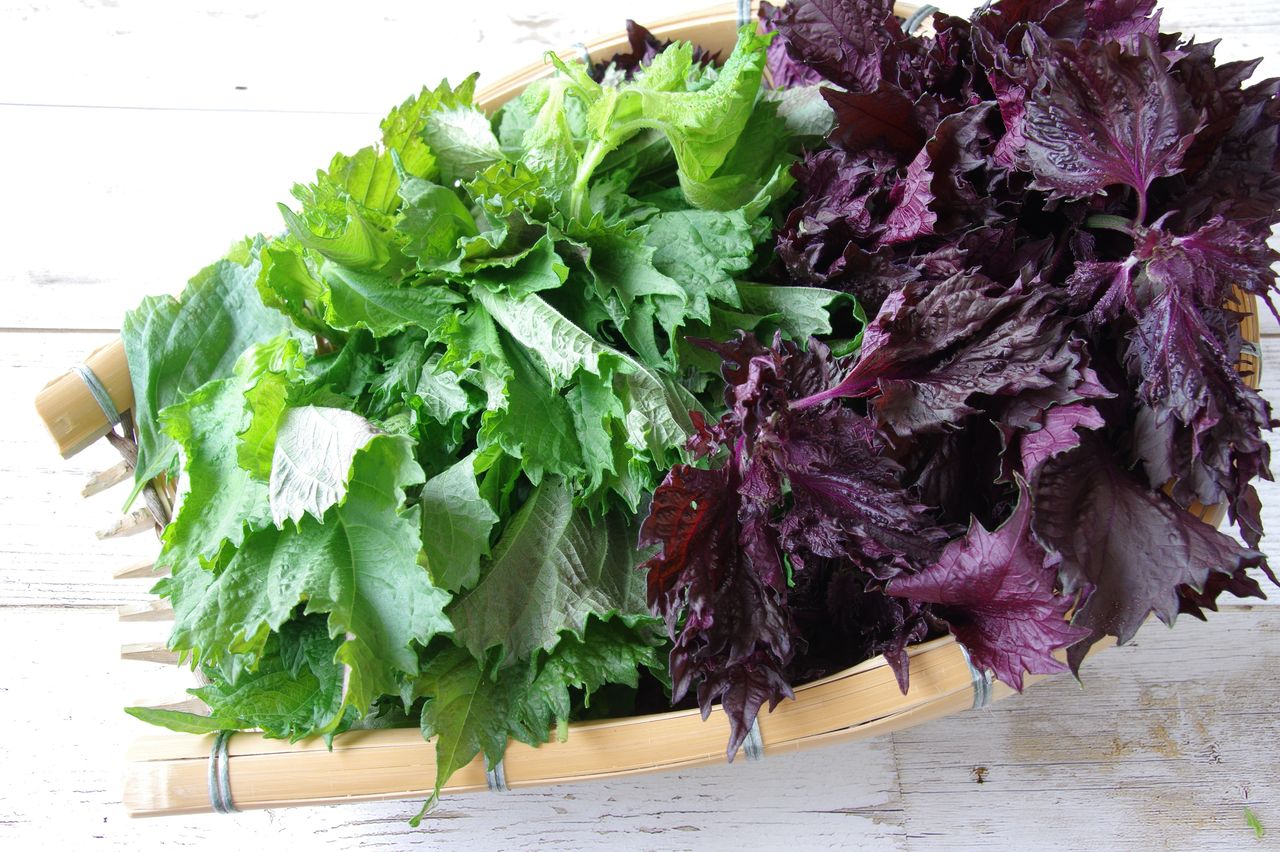
Aojiso (green shiso) and akajiso (red shiso). (© Pixta)
Ginger
This condiment is valued for its pungency and aroma. It is used in stomach and cold medicines, and as an ingredient in various traditional herbal medicines for pain relief and antidiarrheal purposes.
(Originally published in Japanese. Banner photo © Pixta.)

